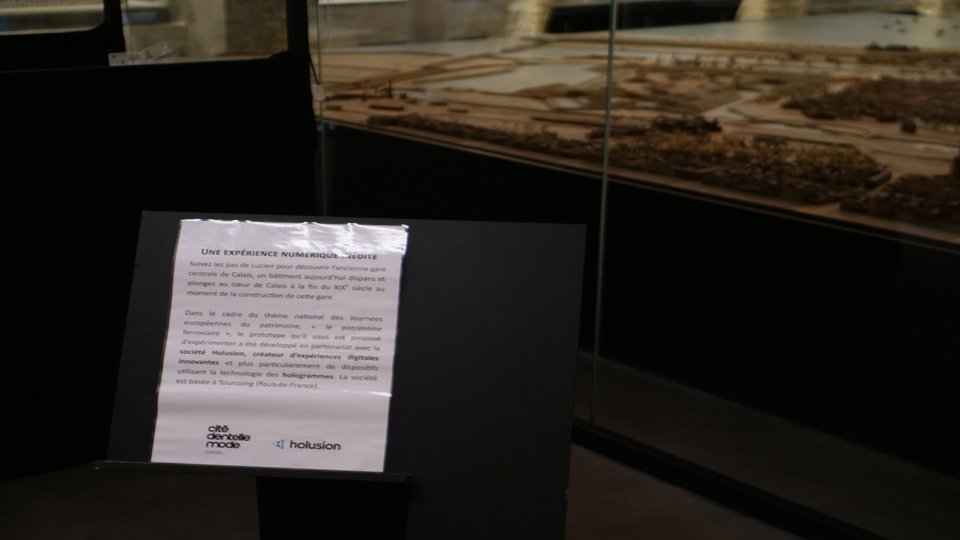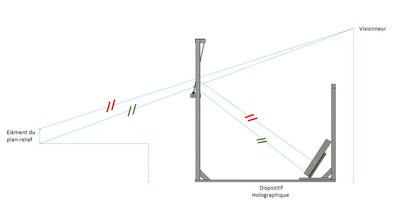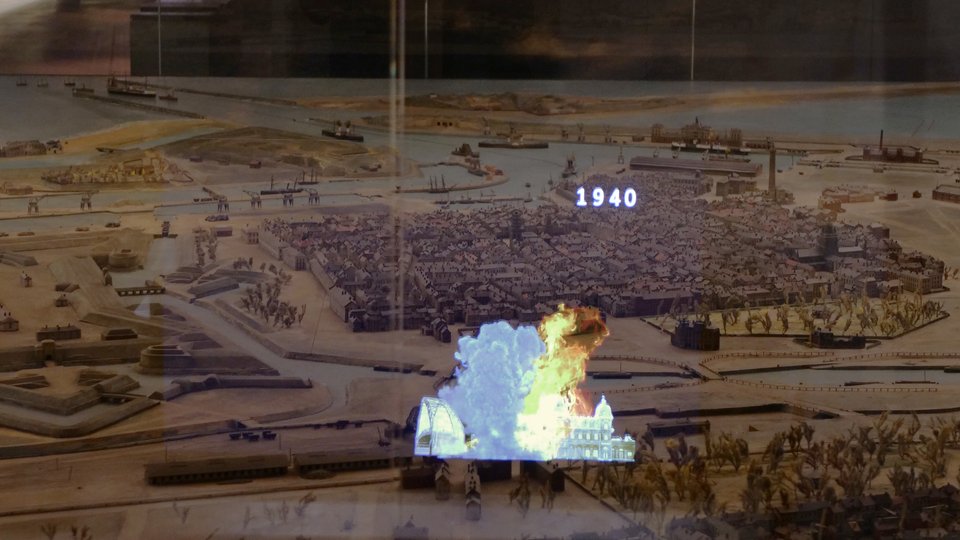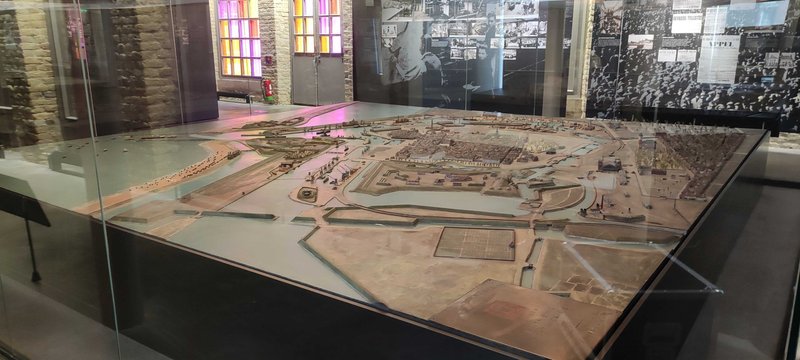The museum owns a 25m² relief map. It represents the post industrial revolution of the city. Despite some mistakes, it is a witness of Calais's history. In fact, during the industrial revolution and the industrialization of lacemaking the city experiences a demographic upheaval : the population increases a lot and Calais and St Pierre are merged.
This map is a key element of the exhibition of the lace and fashion museum, included in their permanent tour. It is now explained by the installation, around the relief map, of labels on the history of each building (casino, town hall, customs barracks… ).
Research on current museum issues
Emergence of digital technology in museums :
New technologies in museums are a sensitive subject in the museum world. It leads to questions on its uses.
Before the 1980's, digital technology had no place in cultural spaces. Indeed, there was a separation between the digital and traditional museum world. The whole mediation tool was made thanks to labels.
Slowly, audio guides emerged in museums to simplify the visits. Step by step, some exhibitions such as Cités cinés in 1987 in France and in Quebec or Mémoires d'Egypte in 1990 in Paris, considered digital tools as an actor of the visits.
Nowadays, digital technology is an integral part of museum space. The museum are looking forward to be more innovative than their competitors and digital tools are becoming a mean of attracting the visitors. However, many devices are created and the users may have trouble to get used to it. They must relearn the ergonomics of each tool. This is why a work on the use is necessary before the introduction of a new digital device.




